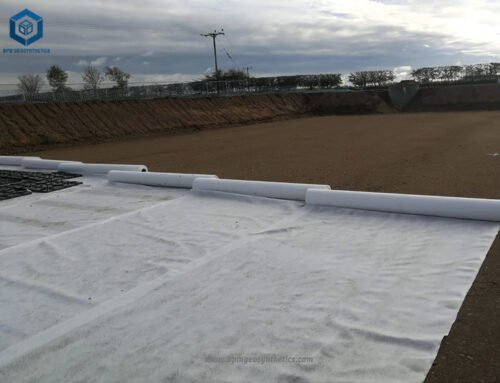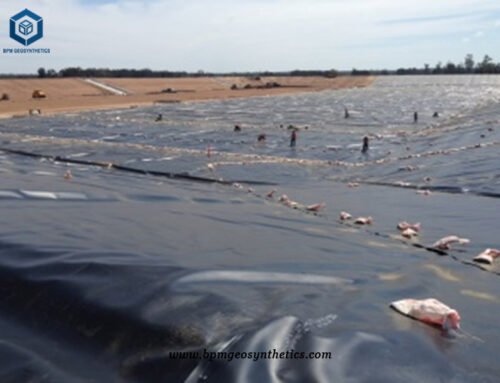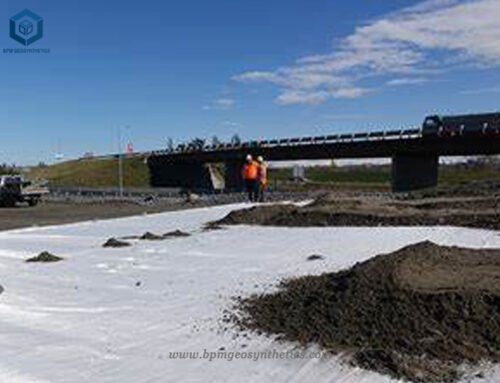GCL Liner, also called Geosynthetic Clay Liner (GCL), is a new type of composite geosynthetic material widely used in a variety of environmental containment applications as an alternative to traditional compacted clay liners to satisfy your exact project requirements. GCL Liner is made with the sodium bentonite particles are filled between a woven geotextile and a non-woven geotextile, so it is also called bentonite clay liner. Within the geosynthetic clay liner, the upper non-woven fabric fibers are passed through the bentonite particles, and the special process and equipment are connected to the underlying woven fabric by a special method. GCL liner which is made by this method do not flow in one direction, and thus can form a uniform waterproof layer in the entire range. The function of waterproof and impervious GCL liner can be widely applied to many engineering construction conditions.
GCL liner is suitable for seepage prevention and waterproof treatment of structures with water storage characteristics such as artificial lakes, reservoirs, large swimming pools, fish farms, channels, garbage disposal yards, etc. Our bentonite clay liner is also applicable to high pressures in buildings, such as basements and tunnels, and impervious and waterproof constructions of buildings in areas with large temperature differences, like seepage prevention, sealing and isolation of subways, pools, and diversion channels.
Geosynthetic Clay Liners (GCLs) advantages
- Permanent waterproof
- Very low permeability coefficient
- Easy to lay and repair
- No special installation of equipment required
- Save costs
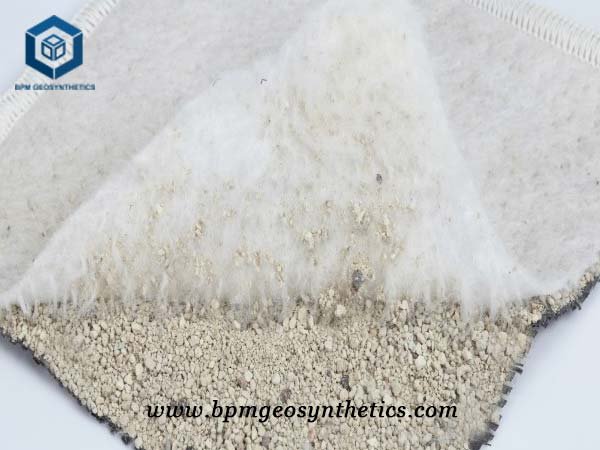

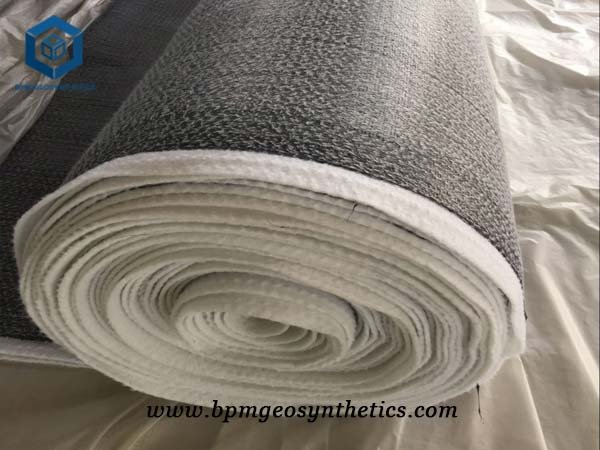
What are the advantages of GCL liner?
Geosynthetic Clay Liners (GCLs) offer several advantages, particularly in applications such as landfill containment, waste ponds, and environmental remediation projects. Here are some key benefits of using GCL liners:
High Permeability Reduction:
- GCLs provide exceptionally low hydraulic conductivity, effectively reducing the permeability of water through the liner. This helps to prevent leachate migration and contamination of underlying soil and groundwater.
Flexibility and Versatility:
- GCLs are flexible and can conform to irregular surfaces, making them suitable for a variety of site conditions. They can be used on slopes and in areas with uneven topography.
Durability:
- GCLs are resistant to chemical and biological degradation, which enhances their longevity. They can withstand exposure to various chemicals commonly found in landfills and industrial waste sites.
Ease of Installation:
- GCLs are relatively easy to install compared to other types of liners. They come in rolls that can be unrolled and laid down quickly, reducing installation time and labor costs.
Lightweight:
- GCLs are lighter than many traditional clay liners, which makes transportation and handling easier. This also reduces the risk of damage during installation.
Environmental Benefits:
- GCLs often use natural sodium bentonite, which is an abundant resource. Their manufacturing process typically has a lower environmental impact compared to other liner materials
Case Study Of GCL liner
Our United State customer inquired 5000 square meters geosynthetic clay liners for landfill project. Through communication,we suggest our customer using 5000g/㎡ gcl liner for landfill according to our rich experience in the industry. Through negotiation,our customer agreed with the price and size we quoted. Finally our customers placed the order for 5.8m*30m total 5,000 square meters BPM GCL liner.
Specifications of GCL liner for Landfill Project in America
- GCL liner Size – 5.8x 30m
- Quantity – 5,000 ㎡
About BPM
BPM is not only fabricating high quality geomembrane, geosynthetics and geotextile products but also providing professional design and installation service. OEM and ODM are also available. Our geosynthetic products had been exporting to over 36 countries. Welcome to visit our factory.
If you have any questions or inquiries, please fill and submit the following form, we will reply as soon as possible.


